archives
02/01/2007 - 03/01/200703/01/2007 - 04/01/2007
04/01/2007 - 05/01/2007
05/01/2007 - 06/01/2007
06/01/2007 - 07/01/2007
07/01/2007 - 08/01/2007
08/01/2007 - 09/01/2007
09/01/2007 - 10/01/2007
10/01/2007 - 11/01/2007
11/01/2007 - 12/01/2007
12/01/2007 - 01/01/2008
01/01/2008 - 02/01/2008
02/01/2008 - 03/01/2008
03/01/2008 - 04/01/2008
04/01/2008 - 05/01/2008
05/01/2008 - 06/01/2008
06/01/2008 - 07/01/2008
07/01/2008 - 08/01/2008
08/01/2008 - 09/01/2008
09/01/2008 - 10/01/2008
10/01/2008 - 11/01/2008
11/01/2008 - 12/01/2008
12/01/2008 - 01/01/2009
01/01/2009 - 02/01/2009
02/01/2009 - 03/01/2009
03/01/2009 - 04/01/2009
04/01/2009 - 05/01/2009
05/01/2009 - 06/01/2009
06/01/2009 - 07/01/2009
07/01/2009 - 08/01/2009
08/01/2009 - 09/01/2009
09/01/2009 - 10/01/2009
10/01/2009 - 11/01/2009
11/01/2009 - 12/01/2009
12/01/2009 - 01/01/2010
01/01/2010 - 02/01/2010
02/01/2010 - 03/01/2010
03/01/2010 - 04/01/2010
 Spectacular Country
Spectacular Country
Add Your Comments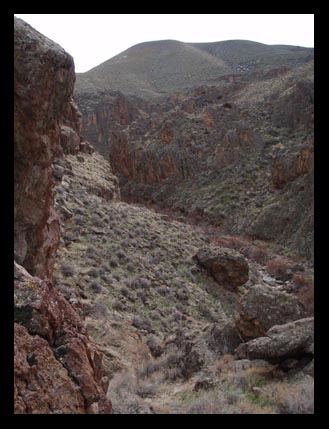
Tuesday March 2 2010
Speed through the Owyhee desert on the highway and all you see is boring rolling desert hills dotted with sagebrush. But get a little closer to the mountains, pick any of the big creeks coming down, and you'll find some spectacular canyons hidden away.
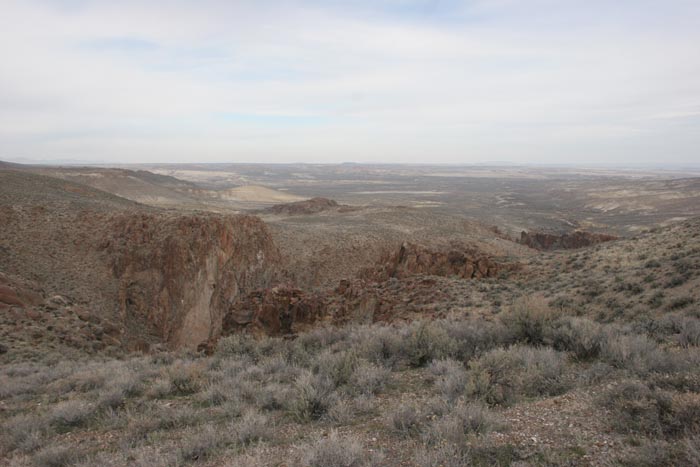
I'd ridden across the Browns Creek drainage in places before - and in fact one day of Steph's multi-day ride often goes this direction, but I've only gotten to do it twice - but I'd never seen these cliffs that I discovered last week, by driving along the ridge between the Browns Creek and Castle Creek drainages. Spread out at the downstream side is the wide Browns Creek drainage
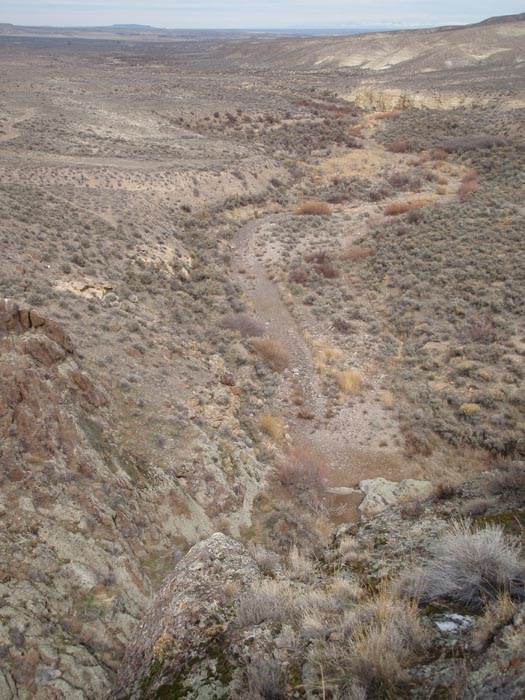 (an old homestead in the distance) that eventually empties into the Snake River ten miles to the northeast. Looking toward the Owyhee mountains, a dramatic, deep, narrow red-walled canyon (with running water now) rises abruptly,
(an old homestead in the distance) that eventually empties into the Snake River ten miles to the northeast. Looking toward the Owyhee mountains, a dramatic, deep, narrow red-walled canyon (with running water now) rises abruptly, 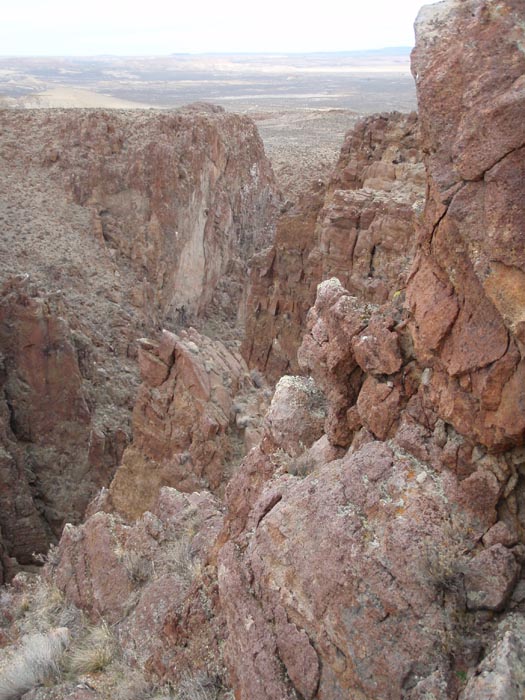 and serpentines about a mile
and serpentines about a mile 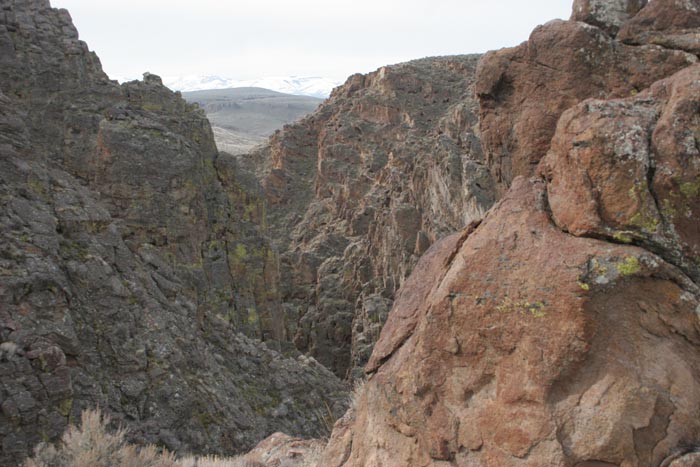 before ending just as abruptly on the upper end in more rolling hills.
before ending just as abruptly on the upper end in more rolling hills. 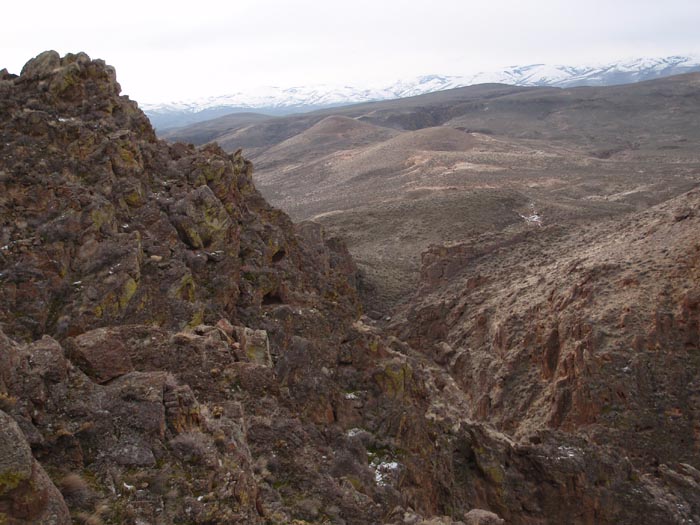
Beyond that another mile or two is another similarly enticing canyon... but I'd save that hike for another day.
In this canyon was a sheer cliff wall that I knew just had to hold a golden eagle nest. As I climbed down closer to the rim of the canyon across from the cliff, I saw whitewash, and as I got even closer... a golden eagle flew away from somewhere in the area of the cliff.
In fact I counted five golden eagle nests on the cliff face (they often have several within their territory, and often rotate nests each year).
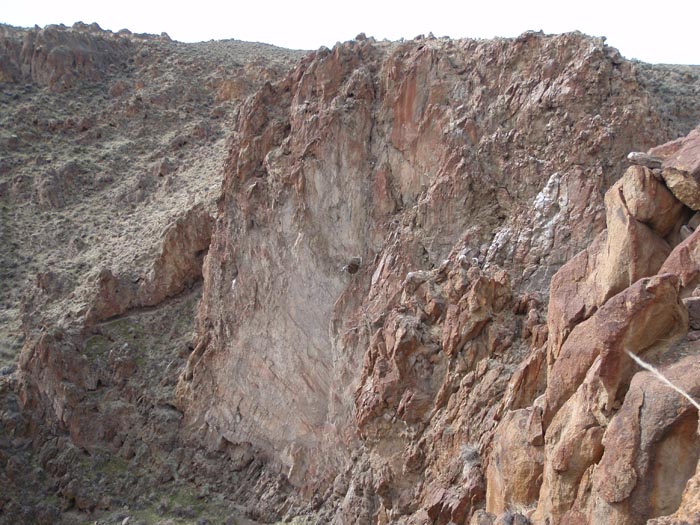
I thought that one looked like it might be in use, or was going to be used.
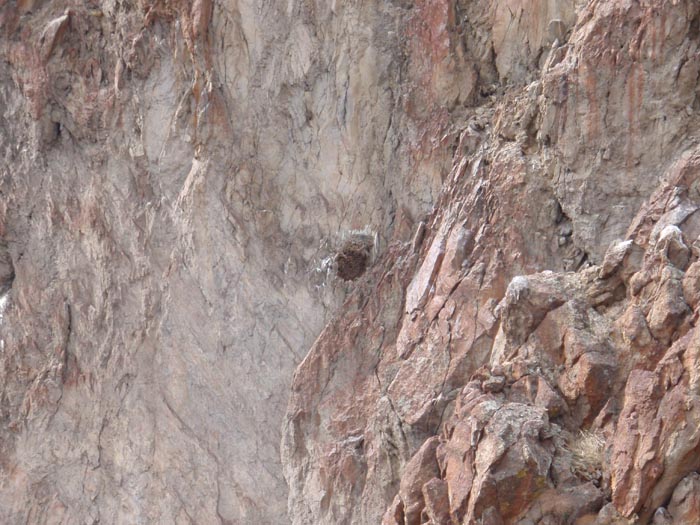
I kept studying the nests and the skies but didn't see any eagles. (I was being watched by a prairie falcon about a hundred yards away, perched on a high rock.) The golden eagles in this area nesting on cliffs should have laid eggs by now, and since I did see an eagle, it was still a possibility there was a nesting pair here. I'd have to bring my bird biologist friend back.
Driving further up the ridge above Browns Creek, if you drop down on the correct road, and take a left at another intersection of another overgrown road, along a seemingly random, minor tributary to Browns Creek, you come across this spectacular sight: an old dam!
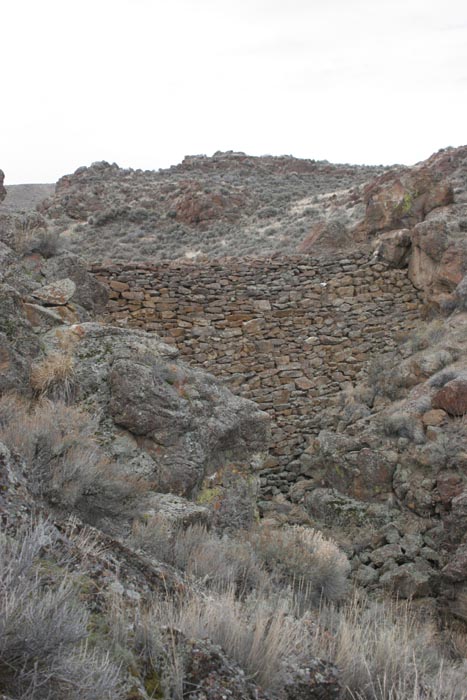
An old timer from around here said it was really used as a wild horse trap. I suppose it could have functioned as one back when wild horses roamed this part of the Owyhees; the low end of it is in quite a steep narrow canyon, and could have served to trap a small herd.
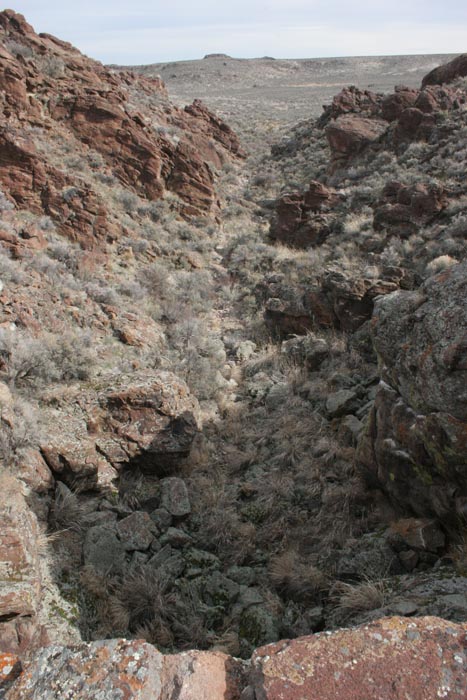
The upper end, however, has held water at some point in its existence.
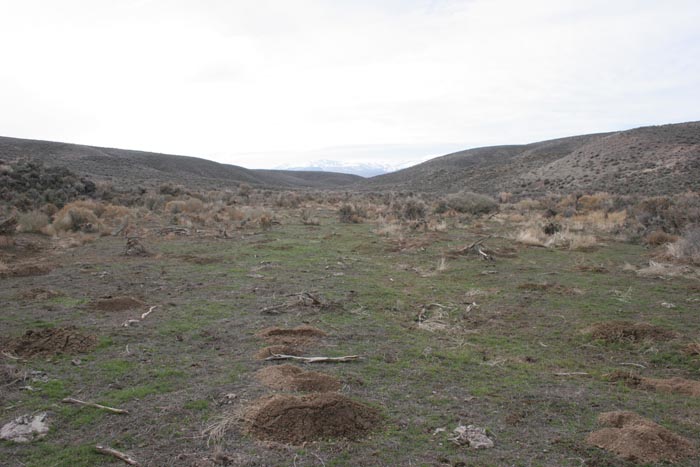
And though there was no water coming down now - and probably hasn't had any steady water coming down for fifty years - back in the old days the water table was much higher and there was a lot more water, and perhaps it did serve as a dam.
It was, in any case, probably a CCC project. The Civilian Conservation Corps was a public work relief program developed by Franklin D Roosevelt during the late 30's to early 40's to provide work for men who were unemployed by the Great Depression, and to help conserve and preserve the nation's natural resources. "C's" crews worked on reforestation (some 3 billion trees were planted), building dams, fire fighting, and forest recreation development. 25,000 Idahoans received jobs and training from 1933-1942.
(I've come across evidence of a CCC camp on Browns Creek in central Idaho, but nothing on the Brown's Creek here in southwest Idaho so far. A trip to the Owyhee County Museum and archives is in order.)
And, in any case, this dam was no little project.
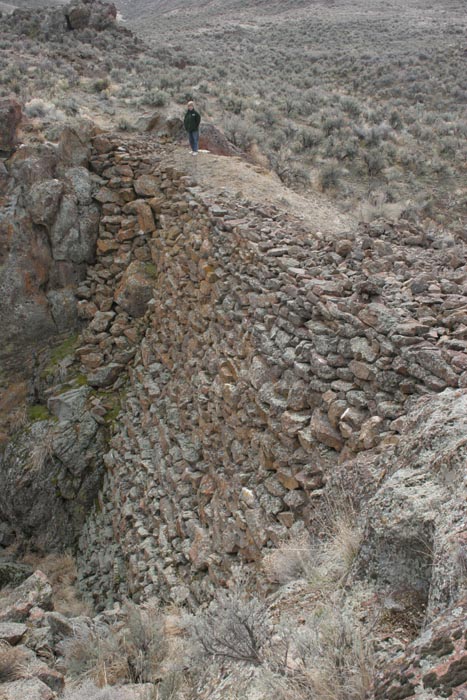
I used to work on trails, and I've built retaining walls a few tiers tall. Even something that small is not the easiest thing to do, when your materials are right at hand. Most often the materials were not right at hand, and we spent a great deal of time searching for rocks and carrying or rolling them to the site we were working on. And of course the rocks usually weren't perfect; you had to shape a lot of them, and hope you didn't break them in the process. (Or your fingers or toes, which also happened upon occasion.)
That this dam is still standing and likely fully functional - in the unlikely event of a hundred-year flood - some 70 years later is a tribute to how well it was built.
This Owyhee corner of Idaho really is spectacular country, full of scenic treasures, and hidden surprises from the past.
The Full Eagle Report will follow.
More photos at of the canyon and dam on This Page.




